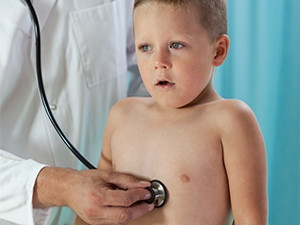
Electronics health and well-being company, Royal Philips, will soon release the Children's Automated Respiration Monitor. The aim of this device is to help improve the diagnosis and treatment of pneumonia in low-resource countries.
This monitoring tool is expected to potentially prevent many of the 935 000 childhood deaths caused by pneumonia each year, by assisting community health workers in establishing a more accurate measurement of a sick child's breathing rate.
JJ van Dongen, CEO of Philips Africa, says one important aspect in diagnosing pneumonia is monitoring a child's breathing rate. "In many emerging markets, community health workers manually count through visual inspection, how many breaths a child takes in the span of one minute, which makes it difficult to achieve an accurate count as shallow breaths are hard to detect."
He says the respiration monitor converts chest movements detected by accelerometers into an accurate breathing count, using specially developed algorithms. It not only provides quantitative feedback, but also qualitative feedback to the healthcare provider.
This feedback response is based on the World Health Organisation's Integrated Management of Childhood guidelines to diagnose fast breathing rates, he adds.
"The Children's Automated Respiration Monitor will be a game-changer in diagnosing and treating pneumonia," says Salim Sadruddin, senior child health advisor at Save the Children.
Van Dongen says this is because accurate diagnosis of breathing counts would support health workers in administering the antibiotics that children with pneumonia need, potentially preventing many of the deaths caused by pneumonia each year.
The device comes with a belt that can be strapped around the chest which can be switched on or off with a press button. It's designed for easy use by community health workers, he explains.
According to Royal Philips, global child health organisations like UNICEF have made pneumonia a key area of focus in their effort to reduce child mortality in underdeveloped countries throughout the world. UNICEF's supply chain division's product innovation project called ARIDA made a call for technology to industry in 2011, with the aim of achieving innovation in this space.
The development of the respiration monitor has been a result of collaboration between the Philips Africa Innovation Hub located in Nairobi, Kenya, the Philips Research team in Eindhoven, The Netherlands and the Philips Innovation Campus in Bangalore, India.
The device is expected to become commercially available from the second quarter of 2016.
Share